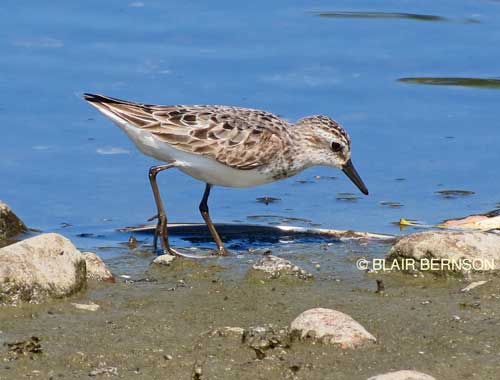Are We There Yet?
The Northern Rough-winged Swallows are on a road trip to Mexico, on their way south for the winter, and yesterday, they stopped off at Montlake Fill to take a break.
Northern Rough-winged Swallows are plain brown- and-white birds who come up to Washington every spring to nest in burrows they dig into sand banks. They’re called rough-winged because they have a tiny, rough fringe of feather-barbs on the leading edges of their wings. No one knows why.
The kids were, I think, driving their parents crazy. Although they are perfectly able to catch their own insects, the youngsters sat on the willow snag at the north end of Main Pond and squawked loudly to be fed. The parents swooped low over the water, caught bunches of bugs, and hurried back to their brood, whose open mouths seemed to be mere gateways to bottomless pits of hunger.
Long-time educator and founder of Northwest Montessor Schools Marietta Rawson once told me that the thing kids want most in all the world is to be grown up.
Maybe so. But when it comes to flying your own way and catching your own bugs, even the swallows seem glad to cling to mom and dad just a little while longer.
A Beach Too Far
July 18th, 2012Much as I admire the Semipalmated Sandpiper who has been visiting the Fill the past couple of days, I have no desire to become one. I wouldn’t be any good at it.
Semipalmated Sandpipers are sparrow-sized shorebirds who breed in the tundra along the coast of the Arctic Ocean from Alaska, across Nunavut, to Newfoundland. They spend the winter in Peru and Brazil, migrating mostly through the Midwest, a flight distance of more than 7,000 miles. That’s14,000 miles round-trip.
Do you realize how far 14,000 miles is? I live a mile away from my local Safeway and make three trips there a week. It would take me 44 years to travel that far.
As I get older, I find myself hesitating to begin jobs that I’ve done often enough to know exactly how long they will take and exactly how much energy they will require. Mowing the grass is a good example: one hour to wrestle the electric mower from the back yard to the front and clean out the grass-catcher that should have been cleaned out the last time but wasn’t, two hours to mow, one hour to drive to Home Depot to buy a new cord because I’ve just run over it and cut it in two for the umpteenth time, an hour to use the weed-whacker to edge the sidewalk, another hour to drive to Home Depot to buy new cord because the spool ran out.
What a colossal drag. Maybe I’ll just pretend I’m cultivating a prairie in my front yard and that’s why the weeds are higher than my head.
I can easily imagine myself as a Semipalmated Sandpiper, living the good life on the beaches of Peru, sipping the occasional sand worm, nibbling on a bug hors d’oeuvre, when all my friends start talking about flying north to breed. “Hilda, let’s skip over Kansas this year – it’s so flat and hot. We could fly right past it if we got a good start.” “Hey, Jim, let’s travel with the babes this year – I hear they’re skipping Kansas.”
Meanwhile, all I can think about is how happy I am on the beach and how tired I will be flying past Kansas.
We all know a journey of a thousand miles begins with the first step, but that would be ridiculous.



No comments:
Post a Comment